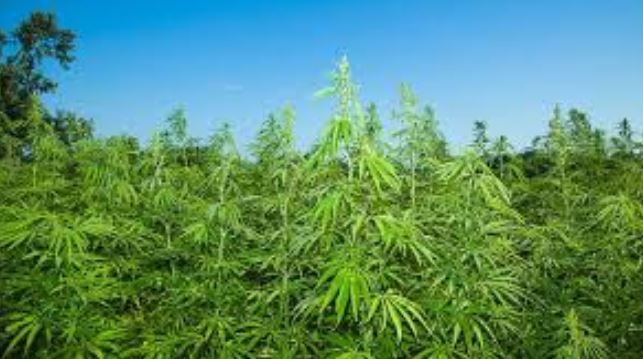Hemp In South Dakota, Part II
 Greetings! We had our first summer study regarding Hemp. We have 11 legislators on our study committee, 4 senators and 7 representatives. Our committee is chaired by House Majority Leader Lee Qualm, who is a farmer from the Platte area.
Greetings! We had our first summer study regarding Hemp. We have 11 legislators on our study committee, 4 senators and 7 representatives. Our committee is chaired by House Majority Leader Lee Qualm, who is a farmer from the Platte area.
Of the 11 members, 8 voted for Hemp and 3 voted against it when we tried passing the 2019 Hemp bill (House Bill 1191) during this past session. In review, we overrode our governor’s veto in the House 55-11, surpassing the 2/3rds needed of 47 votes. However, in the Senate, we had 20 yeas and 13 nays, falling short of the 24 yeas needed for a 2/3rds vote.
Our mission on our summer study is to come up with a hemp bill that is satisfactory for both the House and the Senate. Oh! I almost forgot the party affiliations. There are 7 Republicans and 4 Democrats. Really, on most issues, we are all South Dakotans and vote our consciences, not down strict party lines. I like, and get along with, all the Democrats and consider them friends. The Prime Sponsor of House Bill 1191 was Oren Lesmeister, who is a farmer up by Parade, SD, a democrat, and an Army veteran.
Before our first summer study meeting, 4 of the committee members made a trip to Kentucky to go over how that state is implementing Hemp. Kentucky authorized Hemp in 2014 and hasn’t legalized marijuana. Their attitude toward Hemp is purely agricultural. In our committee hearing, we heard from Kentucky’s Dept. of Ag. and their Law Enforcement.
I stated in last week’s article that I had a bunch of farming questions and didn’t really understand how to plant and harvest this crop. Well, the lightbulb finally went on for me! I understand and am more committed than ever to give our farmers the opportunity to grow Hemp. According to Kentucky’s Dept. of Ag., there are 3 ways to farm hemp. They are grain, floral material, and fiber.
*Grain: It is used for human food or seeds for planting.
Average yield: 518 lbs. per acre. Average price: 1.70 per pound.
*Floral material: This is where CBD oils are extracted and used for Health and Wellness products.
Average yield: 1,024 lbs. per acre. Average price: 7.20 per lb.
*Fiber: This is used for construction material like plywood. (I guess you would call it “plyhemp”?), textiles and thousands of other uses.
Average yield: 2,556 lbs. per acre. Average price: 34 cents per lb.
So, is it profitable? Let’s get the calculator out.
Fiber: 2556 pounds x 34 cents= 869.04 gross per acre.
Grain: 518 lbs. x $1.70 = 880.60 gross per acre.
Note: if our corn farmers yield 200 bushels of corn per acre and get $4 per bushel, that’s $800.60 gross per acre.
Now the big one. Ready??
Floral material (CBD oil): Average yield 1,024 lbs. per acre, average price 7.20 per lb. How much is that? Can’t be? Yep. $7372.80 gross per acre. Unbelievable!
These figures were provided by the Kentucky Dept. of Ag. For the 2017 season.
You notice I said “gross” because there is a lot of cost putting any crop in the ground and harvesting it. Kentucky also charged each farmer a $100 application fee, a $400 growers fee, and $750 per field fee. (How many acres in a farm field?)
Also not included is the price of seed grain, which I think is high because I asked that question twice and it never did get an answer. I figure they didn’t answer me because the seed wasn’t cheap.
Our next meeting is Monday, August 19, at our state capitol in Pierre. Start time is 10:00 am east river time. The public is invited.
To the citizens of District 30 and to the men and women in uniform, in honor of all who served, in respectful memory of all who fell, and in great appreciation to those who serve today, Thank You, for giving me the opportunity to serve you.

Tim R. Goodwin, District 30 Representative
Facebook: Goodwin In The House
 Greetings! We had our first summer study regarding Hemp. We have 11 legislators on our study committee, 4 senators and 7 representatives. Our committee is chaired by House Majority Leader Lee Qualm, who is a farmer from the Platte area.
Greetings! We had our first summer study regarding Hemp. We have 11 legislators on our study committee, 4 senators and 7 representatives. Our committee is chaired by House Majority Leader Lee Qualm, who is a farmer from the Platte area.


Ever wonder how weeds can grow so well and get so big? Hemp appears to be weed-like in that respect. Industrial hemp is a high forage producing legume that is drought tolerant, making it an excellent candidate for improving the soil through carbon sequestration and increased water permeability. Stalks that the cows do not eat in a grazing operation will catch blowing snow in the winter. If it becomes economically and legally viable to use, it will become part of our seed mixture planted for cattle forage. .